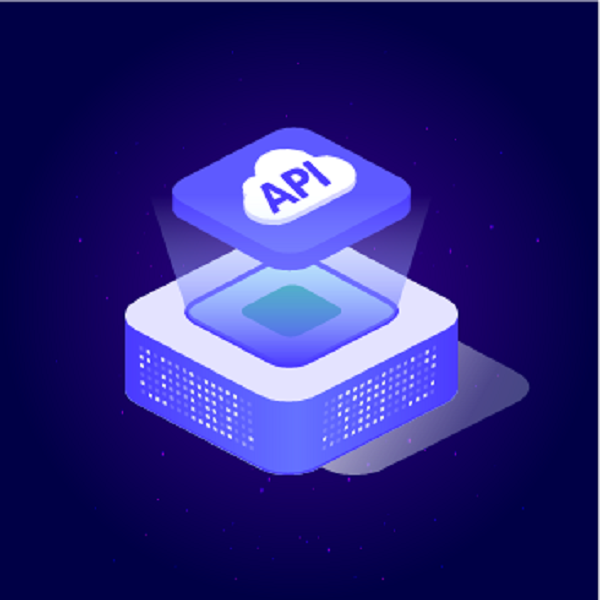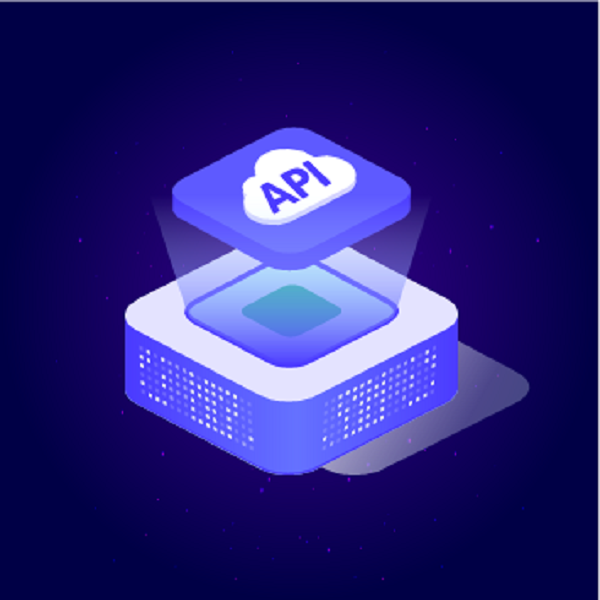Residential Proxies
Allowlisted 200M+ IPs from real ISP. Managed/obtained proxies via dashboard.

Proxies Services
Residential Proxies
Allowlisted 200M+ IPs from real ISP. Managed/obtained proxies via dashboard.
Residential (Socks5) Proxies
Over 200 million real IPs in 190+ locations,
Unlimited Residential Proxies
Unlimited use of IP and Traffic, AI Intelligent Rotating Residential Proxies
Static Residential proxies
Long-lasting dedicated proxy, non-rotating residential proxy
Dedicated Datacenter Proxies
Use stable, fast, and furious 700K+ datacenter IPs worldwide.
Mobile Proxies
Dive into a 10M+ ethically-sourced mobile lP pool with 160+ locations and 700+ ASNs.
Scrapers
Collection of public structured data from all websites
Proxies
Residential Proxies
Allowlisted 200M+ IPs from real ISP. Managed/obtained proxies via dashboard.
Starts from
$0.6/ GB
Residential (Socks5) Proxies
Over 200 million real IPs in 190+ locations,
Starts from
$0.03/ IP
Unlimited Residential Proxies
Unlimited use of IP and Traffic, AI Intelligent Rotating Residential Proxies
Starts from
$1816/ MONTH
Rotating ISP Proxies
ABCProxy's Rotating ISP Proxies guarantee long session time.
Starts from
$0.4/ GB
Static Residential proxies
Long-lasting dedicated proxy, non-rotating residential proxy
Starts from
$4.5/MONTH
Dedicated Datacenter Proxies
Use stable, fast, and furious 700K+ datacenter IPs worldwide.
Starts from
$4.5/MONTH
Mobile Proxies
Allowlisted 200M+ IPs from real ISP. Managed/obtained proxies via dashboard.
Starts from
$1.2/ GB
Scrapers
Web Unblocker
Simulate real user behavior to over-come anti-bot detection
Starts from
$1.2/GB
Serp API
Get real-time search engine data With SERP API
Starts from
$0.3/1K results
Scraping Browser
Scale scraping browsers with built-inunblocking and hosting
Starts from
$2.5/GB
Documentation
All features, parameters, and integration details, backed by code samples in every coding language.
TOOLS
Resources
Addons
ABCProxy Extension for Chrome
Free Chrome proxy manager extension that works with any proxy provider.
ABCProxy Extension for Firefox
Free Firefox proxy manager extension that works with any proxy provider.
Proxy Manager
Manage all proxies using APM interface
Proxy Checker
Free online proxy checker analyzing health, type, and country.
Proxies
AI Developmen
Acquire large-scale multimodal web data for machine learning
Sales & E-commerce
Collect pricing data on every product acrossthe web to get and maintain a competitive advantage
Threat Intelligence
Get real-time data and access multiple geo-locations around the world.
Copyright Infringement Monitoring
Find and gather all the evidence to stop copyright infringements.
Social Media for Marketing
Dominate your industry space on social media with smarter campaigns, anticipate the next big trends
Travel Fare Aggregation
Get real-time data and access multiple geo-locations around the world.
By Use Case
English
繁體中文
Русский
Indonesia
Português
Español
بالعربية


This article systematically analyzes the core technical principles of JSON parsing, explores parsing strategies and performance optimization solutions in different scenarios, and provides developers with a complete practical reference.
Core Definition and Technical Challenges of JSON Parsing
JSON (JavaScript Object Notation) is a lightweight data exchange format. Its parsing process requires converting text data into structured objects in memory (such as dictionaries and lists). The core challenges of parsing include:
Syntax validation: detects illegal characters (such as unclosed quotes, incorrect comma separation).
Data type mapping: Accurately identify numeric values (Int/Float), Boolean values, null, and nested structures.
Performance bottleneck: memory usage and processing speed issues when parsing large files.
Core technology implementation of JSON parsing
Parser workflow
Lexical Analysis: Split the JSON string into a sequence of tokens (such as {, "key", :, etc.).
Syntax Analysis: Build an abstract syntax tree (AST) based on the state machine to verify the legality of the structure.
Semantic conversion: Convert AST into the data structure of the target language (such as Python's dict, Java's HashMap).
Example: Python parsing process
import json
data = json.loads('{"name": "Alice", "age": 30}')
# Step breakdown:
# 1. Lexical analysis generates tokens: ['{', 'name', ':', 'Alice', ',', 'age', ':', '30', '}']
# 2. Build AST: The root node is a dictionary containing two key-value pairs
# 3. Convert to Python dictionary object
Data type mapping rules
Numerical processing: distinguish between integers and floating-point numbers (e.g. 42 → int, 3.14 → float).
String escapes: handling Unicode (like \u4e2d→"中") and special characters (like \"→").
Nested structures: recursively parse arrays ([]) and objects ({}).
Exception handling mechanism
Error location: The location of syntax errors is indicated by line and column numbers.
Tolerant mode: Some parsers support ignoring redundant commas or comments (non-standard extension).
Performance optimization strategy
Streaming Parsing: Use libraries such as ijson to read files block by block to avoid memory overflow.
Precompiled Schema: Define data structure through Pydantic or JSON Schema to speed up verification and conversion.
C extension acceleration: Use orjson (Rust implementation) or ujson to replace the standard library to increase the parsing speed by 3-10 times.
Typical application scenarios of JSON parsing
Front-end and back-end API data interaction
Request/response parsing: Convert the JSON data in the HTTP Body into server-side objects.
Data validation: Verify the field type and format in combination with Schema (such as regular expression matching of email addresses and mobile phone numbers).
Configuration file parsing
Dynamic loading: Parse the parameters in config.json (such as database connection information, log level).
Hot update support: Real-time reloading is achieved through a file monitoring mechanism (such as Python's watchdog).
Log and data analysis
Log formatting: Parse semi-structured log text (such as { "timestamp": "2025-03-14", "event": "login" }) into a query-friendly format.
Big Data Processing: Use json_normalize in Spark or Pandas to flatten nested JSON into a two-dimensional table.
NoSQL Database Interaction
Document storage: MongoDB's BSON format is compatible with JSON, and the parser needs to handle extended types such as ObjectId.
Query syntax parsing: Convert query conditions in JSON format (such as {"price": {"$gt": 100}}) into database native instructions.
Technical Challenges and Solutions for JSON Parsing
Challenge 1: Memory consumption of large files
Solution:
Use the raw_decode() method of json.JSONDecoder to parse it piece by piece.
Use Dask, Modin and other libraries to implement distributed parsing.
Challenge 2: Non-standard format compatibility
Problem: Non-standard syntax like single quotes, trailing commas, comments, etc.
Solution: Enable a loose parser such as json5 or demjson, or preprocess the text (such as regular expression replacement).
Challenge 3: Cross-language data compatibility
Typical problem: JavaScript's BigInt vs Python's int range differences.
Solution: Use strings to store large integers during serialization (such as "id": "12345678901234567890").
Challenge 4: Security risks
Risk point: Parsing maliciously constructed JSON leads to memory exhaustion (such as deeply nested structures).
Defensive measures:
Set a recursion depth limit (e.g. json.loads(data, max_depth=100)).
Use a sandbox environment to parse untrusted data.
Conclusion
As a basic capability of modern software development, the efficiency and robustness of JSON parsing directly affect system performance and stability. Developers need to choose parsing strategies according to the scenario, and optimize the critical path by combining preprocessing, streaming processing and high-performance libraries. As a professional proxy IP service provider, abcproxy provides a variety of high-quality proxy IP products, including residential proxies, data center proxies, static ISP proxies, Socks5 proxies, and unlimited residential proxies, which are suitable for a variety of application scenarios. If you are building a data collection system that needs to frequently call third-party APIs, you can combine abcproxy's proxy IP service with high-performance JSON parsing technology to achieve an efficient and reliable data processing pipeline.
Featured Posts
Popular Products
Residential Proxies
Allowlisted 200M+ IPs from real ISP. Managed/obtained proxies via dashboard.
Residential (Socks5) Proxies
Over 200 million real IPs in 190+ locations,
Unlimited Residential Proxies
Use stable, fast, and furious 700K+ datacenter IPs worldwide.
Rotating ISP Proxies
ABCProxy's Rotating ISP Proxies guarantee long session time.
Residential (Socks5) Proxies
Long-lasting dedicated proxy, non-rotating residential proxy
Dedicated Datacenter Proxies
Use stable, fast, and furious 700K+ datacenter IPs worldwide.
Web Unblocker
View content as a real user with the help of ABC proxy's dynamic fingerprinting technology.
Related articles

Free and Fast Proxy: Can You Really Have Both
Explore the balance between free and fast proxy services, and learn how abcproxy delivers high-speed, reliable proxy solutions for diverse needs.

How to efficiently parse HTML table data with Python
This article explains in detail the core methods of Python parsing HTML tables, explores practical techniques for efficient data extraction, analyzes the key role of proxy IP services in web page collection, and recommends abcproxy professional proxy IP solution.

JSON parsing technology: principles, optimization and practical guide
This article systematically analyzes the core technical principles of JSON parsing, explores parsing strategies and performance optimization solutions in different scenarios, and provides developers with a complete practical reference.